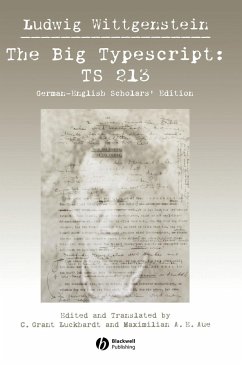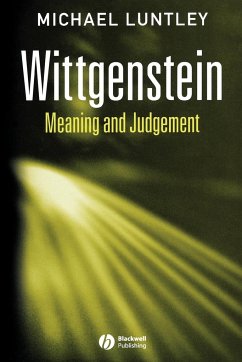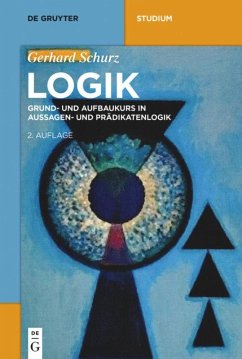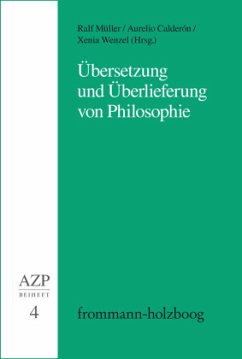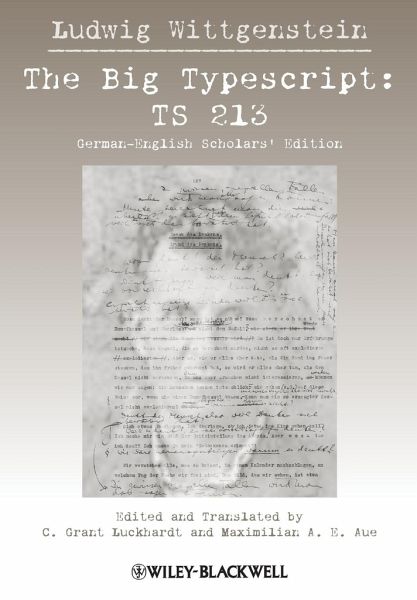
The Big Typescript
Ts 213
Transl.: Luckhardt, C. Grant; Aue, Maximilian E.
Versandkostenfrei!
Versandfertig in über 4 Wochen
50,99 €
inkl. MwSt.
Weitere Ausgaben:

PAYBACK Punkte
25 °P sammeln!
Long awaited by the scholarly community, Wittgenstein's so-called Big Typescript (von Wright Catalog No.TS 213) is presented here in an en face English-German scholar's edition.Presents scholar's edition of important material from 1933, Wittgenstein's first efforts to set out his new thoughts after the publication of the Tractatus Logico PhilosophicusIncludes indications to help the reader identify Wittgenstein's numerous corrections, additions, deletions, alternative words and phrasings, suggestions for moves within the text, and marginal comments In 1933, Wittgenstein set out to dictate a co...
Long awaited by the scholarly community, Wittgenstein's so-called Big Typescript (von Wright Catalog No.TS 213) is presented here in an en face English-German scholar's edition.
Presents scholar's edition of important material from 1933, Wittgenstein's first efforts to set out his new thoughts after the publication of the Tractatus Logico Philosophicus
Includes indications to help the reader identify Wittgenstein's numerous corrections, additions, deletions, alternative words and phrasings, suggestions for moves within the text, and marginal comments In 1933, Wittgenstein set out to dictate a collection of his recent writings to a typist in the form of a book. Even as he was dictating he began revising the text extensively, so that the surviving typewritten manuscript contains numerous corrections, additions, deletions, alternative words and phrasings, suggestions for moves within the text, and marginal comments in both handwritten and typed form.
Long awaited by the scholarly community, Wittgenstein's so-called Big Typescript (von Wright Catalog no. TS 213) is presented here for the first time in an en-face German-English scholars' edition, complete with clear indications to help the reader identify the various levels of Wittgenstein's editing.
This text provided a rich source of material for Wittgenstein's subsequent writings, and therefore serves as a key to understanding much of his later philosophy.
In 1933, Wittgenstein set out to dictate a collection of his recent writings to a typist in the form of a book. Even as he was dictating he began revising the text extensively, so that the surviving typewritten manuscript contains numerous corrections, additions, deletions, alternative words and phrasings, suggestions for moves within the text, and marginal comments in both handwritten and typed form.
Long awaited by the scholarly community, Wittgenstein's so-called Big Typescript (von Wright Catalog no. TS 213) is presented here for the first time in an en-face German-English scholars' edition, complete with clear indications to help the reader identify the various levels of Wittgenstein's editing.
This text provided a rich source of material for Wittgenstein's subsequent writings, and therefore serves as a key to understanding much of his later philosophy.
In 1933, Wittgenstein set out to dictate a collection of his recent writings to a typist in the form of a book. Even as he was dictating he began revising the text extensively, so that the surviving typewritten manuscript contains numerous corrections, additions, deletions, alternative words and phrasings, suggestions for moves within the text, and marginal comments in both handwritten and typed form.
Long awaited by the scholarly community, Wittgenstein's so-called Big Typescript (von Wright Catalog no. TS 213) is presented here for the first time in an en-face German-English scholars' edition, complete with clear indications to help the reader identify the various levels of Wittgenstein's editing.
This text provided a rich source of material for Wittgenstein's subsequent writings, and therefore serves as a key to understanding much of his later philosophy.
Presents scholar's edition of important material from 1933, Wittgenstein's first efforts to set out his new thoughts after the publication of the Tractatus Logico Philosophicus
Includes indications to help the reader identify Wittgenstein's numerous corrections, additions, deletions, alternative words and phrasings, suggestions for moves within the text, and marginal comments In 1933, Wittgenstein set out to dictate a collection of his recent writings to a typist in the form of a book. Even as he was dictating he began revising the text extensively, so that the surviving typewritten manuscript contains numerous corrections, additions, deletions, alternative words and phrasings, suggestions for moves within the text, and marginal comments in both handwritten and typed form.
Long awaited by the scholarly community, Wittgenstein's so-called Big Typescript (von Wright Catalog no. TS 213) is presented here for the first time in an en-face German-English scholars' edition, complete with clear indications to help the reader identify the various levels of Wittgenstein's editing.
This text provided a rich source of material for Wittgenstein's subsequent writings, and therefore serves as a key to understanding much of his later philosophy.
In 1933, Wittgenstein set out to dictate a collection of his recent writings to a typist in the form of a book. Even as he was dictating he began revising the text extensively, so that the surviving typewritten manuscript contains numerous corrections, additions, deletions, alternative words and phrasings, suggestions for moves within the text, and marginal comments in both handwritten and typed form.
Long awaited by the scholarly community, Wittgenstein's so-called Big Typescript (von Wright Catalog no. TS 213) is presented here for the first time in an en-face German-English scholars' edition, complete with clear indications to help the reader identify the various levels of Wittgenstein's editing.
This text provided a rich source of material for Wittgenstein's subsequent writings, and therefore serves as a key to understanding much of his later philosophy.
In 1933, Wittgenstein set out to dictate a collection of his recent writings to a typist in the form of a book. Even as he was dictating he began revising the text extensively, so that the surviving typewritten manuscript contains numerous corrections, additions, deletions, alternative words and phrasings, suggestions for moves within the text, and marginal comments in both handwritten and typed form.
Long awaited by the scholarly community, Wittgenstein's so-called Big Typescript (von Wright Catalog no. TS 213) is presented here for the first time in an en-face German-English scholars' edition, complete with clear indications to help the reader identify the various levels of Wittgenstein's editing.
This text provided a rich source of material for Wittgenstein's subsequent writings, and therefore serves as a key to understanding much of his later philosophy.




